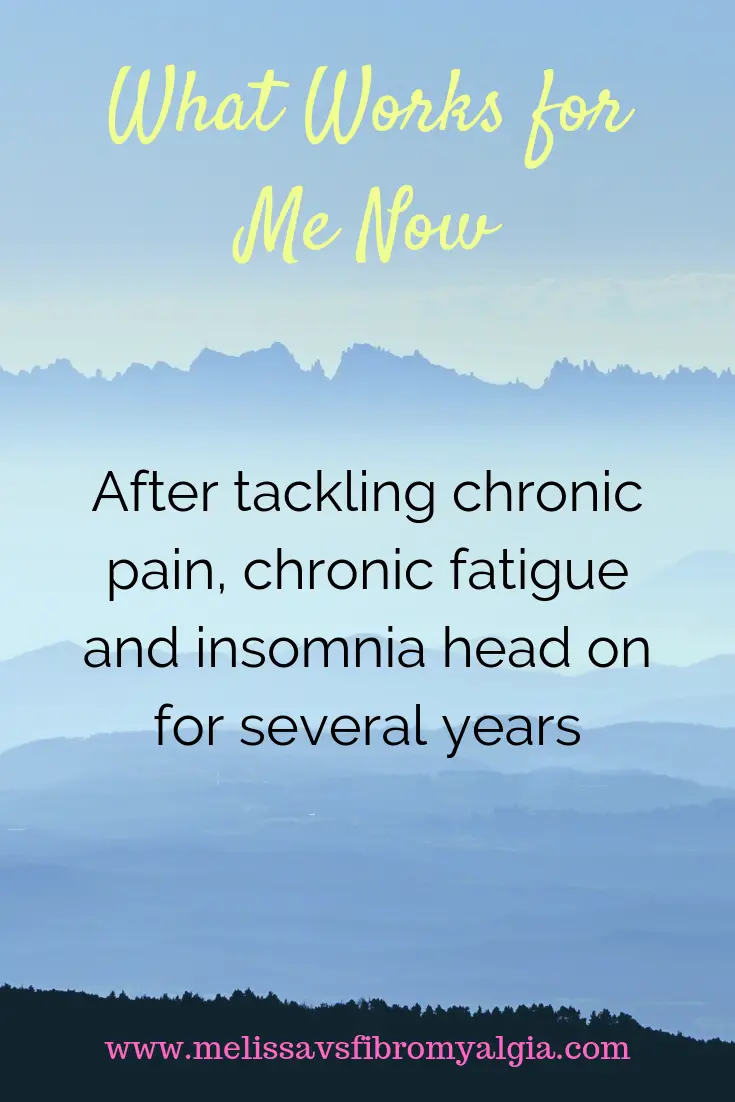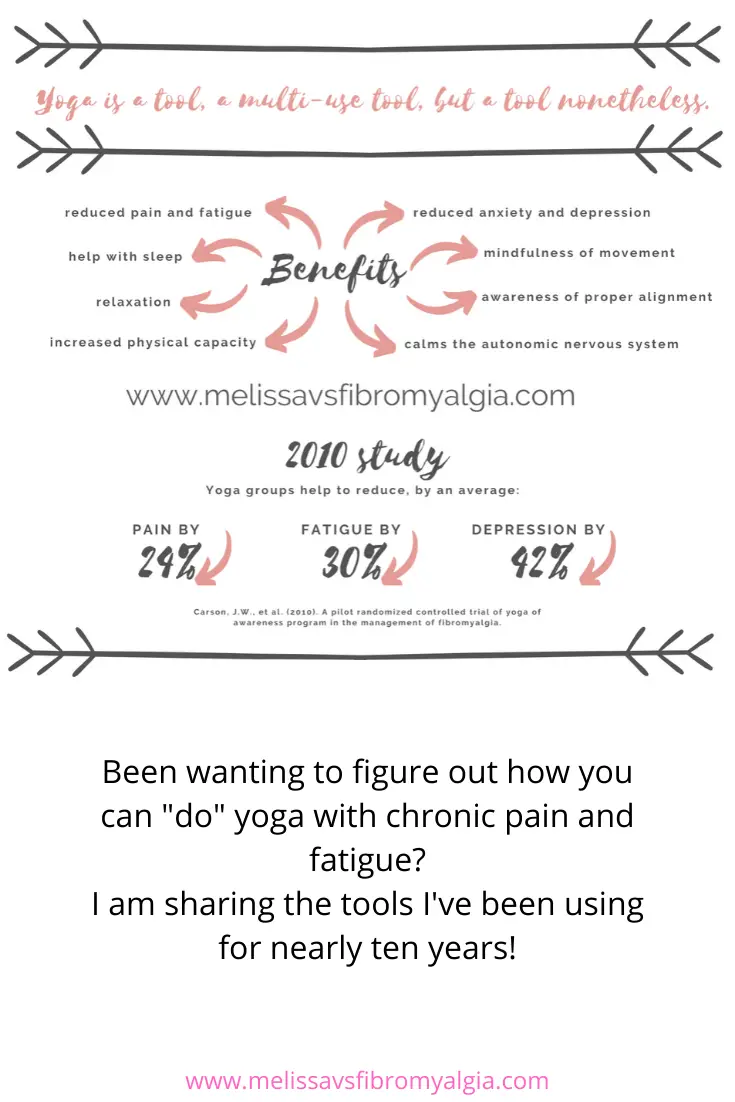Last Updated on March 14, 2020 by melissanreynolds
Several years ago I first shared my list “what works for me: nine things to fight fibromyalgia”. It included:
- Reduced work hours
- Supplementation
- Physiotherapy
- Sleep
- Reduced activity levels
- Meditation
- Exercise
- Pain management techniques
- Hope
So what would I keep in this list? What would I add?

My current understanding is that there are six key areas to fight chronic pain, chronic fatigue and fibromyalgia:
- Knowledge and taking control for ourselves
- Sleep
- Perpetuating factors
- Central nervous system
- Fatigue and pacing
- Pain relief
What works for me right now?
Find the video here
Sleep
Sleep is the biggest component of my journey. I will discuss this more under Low Dose Naltrexone, below, but it is HUGE. See also my giant insomnia post for more.
Pain Management
Aside from sleep and physiotherapy I do a lot of stretching, self-trigger point work, yoga, meditation, essential oils, heat and more. I am employing more natural remedies than medicinal.
Low Dose Naltrexone – is now number one on my list. This one covers sleep and pain management . It helps me sleep in more than one hour blocks, which has been the biggest part of my puzzle. Now, when I sleep only six or seven hours (due to the baby) but a few hours in a row, I feel infinitely better than I ever did on my eight or nine broken hours. As a result I experience less pain, less anxiety, less brain fog. More health and a much better quality of life.
Physiotherapy – this is still crucial, more specifically the insertion of dry needles into trigger points and left for 15 minutes to rest to encourage blood flow and relaxation followed by stretching and mobilizations. I only have to go every three weeks at the moment, which is a big win as I pay privately for every treatment. Learn more about myofascial pain syndrome and trigger points here.
BONUS: Building my toolkit of things I can do myself anytime, anywhere to help. Yoga is a huge part of this for me. I use yoga and meditation daily to help. From getting to sleep, in the middle of the night, in the day time and at random times. If you would like to learn from my toolkit, then join us in Yoga for the Chronic Life virtual studio now!

Pacing
A combination of reduced work hours and reduced activity levels. Both are key. Reduced work hours is the first thing that jump started my journey to wellness and is still part of managing my energy envelope.
Perpetuating Factors/Normal Human Needs
For me, this means managing the myofascial pain syndrome and the fibromyalgia. Most of my six key ways hit multiple symptoms. Aside from managing my posture, avoiding triggers and sleeping as best as I can, these two are important:
Nourishment – I am learning about the importance of nutrition right now. I haven’t yet finalised my template for eating going forward but all of my research seems to suggest the number one thing we can do is prioritize vegetables and fruits. Then I am prioritizing healthy fats (olive oil, coconut oil etc) and good quality protein. This leads to a lower consumption of grains. As an offshoot, supplementation, is key. I am using magnesium and 5HTP to sleep (after finally getting off amitriptyline after years which precluded 5HTP). I also supplement with MSM as our soils are generally deficient in sulphur and this seems to help me. I am preferring whole foods over supplements – I am taking moringa powder or hemp powder for naturally occuring vitamins and minerals.
Gentle exercise – this is still key but I am able to do more than I was previously. I can now do 30 minute walks without pain hangovers. My exercise of choice includes yoga, walking and Pilates.
Central nervous system
Meditation – this has only become more integral to my daily life. I have meditated daily for more than five years now. I use it for rest (I can’t nap), for pain relief (or a break from it when it is bad) and stress relief. The benefits I have reaped since my initial post are so many that I am a mindfulness and meditation cheerleader. You can sign up for my free workshop Mindfulness for the Chronic Life here.
So these are the key things that are working for me now.
I know it is complex. It has taken me years and a lot of research and personal trial and error to figure out. I have provided many links in this post to help you in your research.
If you would like to learn more about how to get a jump start on your journey then you can join You vs Fibromyalgia free micro course and my newsletter list (which will give you access to a heap of other free resources including printable templates, reports, micro courses, workshops and more).

Do you like the work I do here ensuring that people with fibromyalgia receive the tools, education and support they deserve? Especially while pregnant. Then consider joining the Melissa vs Fibromyalgia Inner Circle Membership group and get access to the exclusive members library. It’s a pay what you can model starting at just $5 per month.

Thanks for the post!
I’m really interested in how you approached your employer for reduced work hours? I feel this is key for people dealing with anything from chronic illness to day to day life traumas.
I actually had to apply for an entirely new part time position. Though it is not easy to apply for and get part time work as it is usually undervalued!
So glad these are working for you! Thanks for sharing! I do many of them myself but definitely needed the encouragement to keep doing them regularly.
I am so happy to hear that!! 🙂